Tags
198 S 100 E
28 Thursday Sep 2023
Posted in Uncategorized
28 Thursday Sep 2023
Posted in Uncategorized
Tags
24 Friday Dec 2021
Posted in Uncategorized
15 Wednesday Aug 2018
Posted in Uncategorized
Tags
18 Saturday Apr 2015
Posted in Uncategorized
Tags
This monument in the Salem Cemetery stood out to me so I decided to look it up.
Nigel Kenton Olsen
21 years old
Date of birth: Jan 20, 1989
Date of passing: Mar 4, 2010
Let the memory of Nigel be with us forever
United States Marine Lance Corporal Nigel Kenton Olsen of Orem, Utah was assigned to the 4th Light Armored Reconnaissance Battalion, 4th Marine Division, Marine Forces Reserve; Camp Pendleton, Calif. Nigel was Killed In Action on March 4, 2010, while supporting combat operations in Helmand province, Afghanistan. Nigel Olsen knew from a very young age that he would serve his country. He prepared for that dream all his life by spending his time immersed in the study of military history, military aircraft, warships, tanks and guns. His Sgt in Afghanistan would often stay up at night searching the Marine manual to come up with a question that he thought Nigel would not know the answer to, but was never successful. Nigel was always up for the next assignment and completed it with skill and a positive attitude. It’s been said that Nigel never complained, even when there was plenty to complain about. Nigel lived his life full of determination and integrity. In a speech given at a memorial held in Afghanistan, his Sgt said “if a vote were taken today, hands down, Nigel would win as the kindest man in the company”. On Jan. 20, Nigel should have turned 22 years old. One of his Marine brothers sent us this message of how Nigel celebrated his 21st birthday in Afghanistan….”We had been on watch for 24 hours and it was cold and windy and miserable. One of my duties was to get the morning chow set out for the Marines and it was just unbearable to work in those conditions. At about 0300 Olsen walked by still wearing his 40 lb pack and asked if he could help me. I asked him why he would help me with this when he should be getting some sleep since he had patrol in 2 hours. He replied, ‘Well, Sgt Louis today is my birthday. I don’t want to be sleeping it away…besides, what good is a birthday, if you don’t help your brothers”? In honor of the sacrifice of Nigel and Carlos Aragon, their families have established the “Carlos Aragon and Nigel Olsen Enduring Freedom Scholarship Fund” which provides a Mtn. View High School Senior with a scholarship to the college or university of their choice.
05 Friday Sep 2014
Posted in Uncategorized
Tags
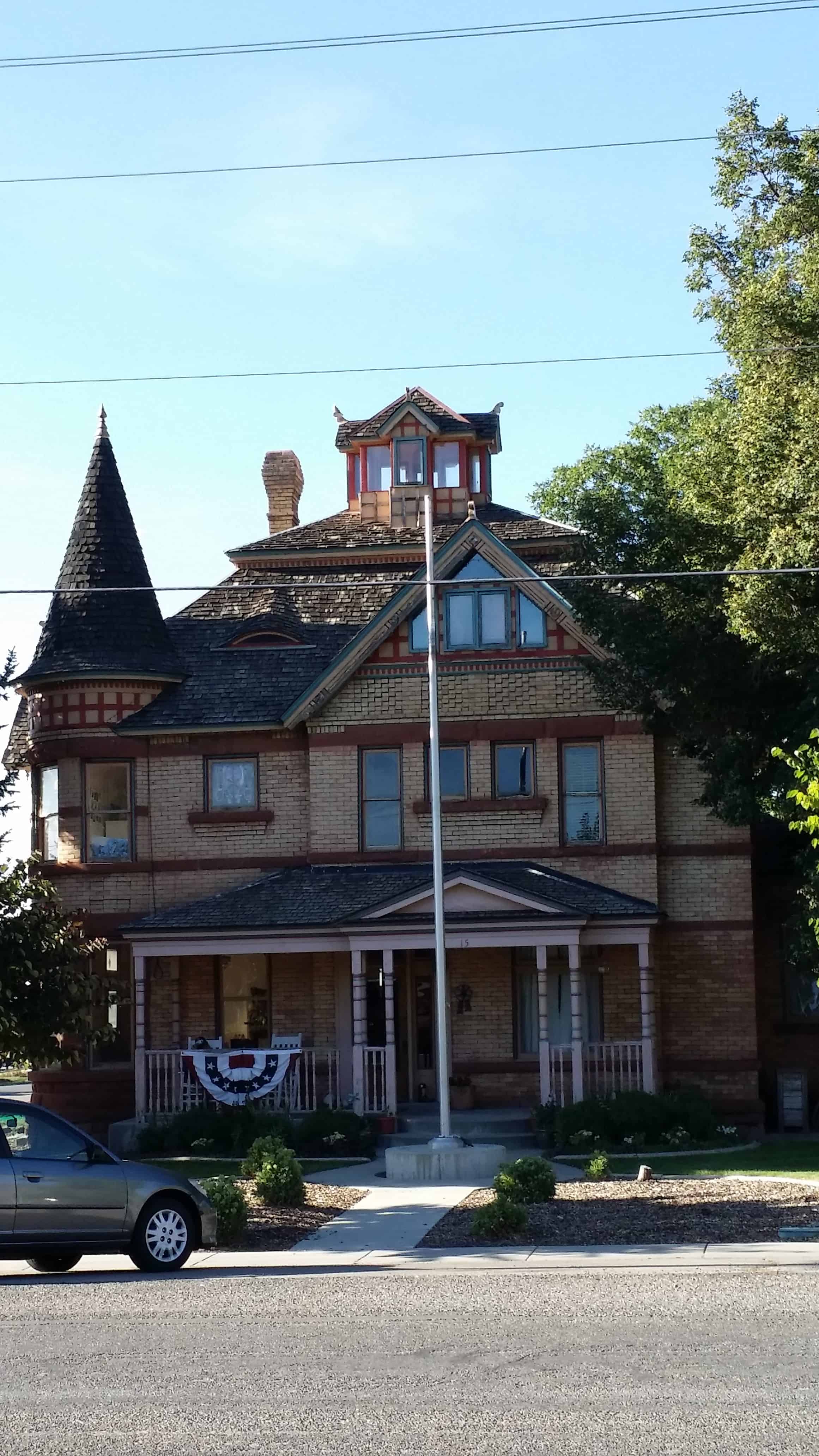

The Ira W. Gardner Home was built in Queen Anne Victorian style over several years during the 1890’s for one of Utah County’s prominent ranchers. In Salem, Utah, (population 920) the Gardner Home is considered the town’s landmark residence.
The Ira W. Gardner House was built in 1895 and is located at 15 East Center Street in Salem, Utah. It was added to the National Register of Historic Places (#77001323) on July 28, 1977 and the text on this page is from the nomination form when it was added.
The Ira W. Gardner Home is a two-story Queen Anne style building constructed of light tan colored brick and dark red-brown colored sandstone. The asymmetrical facades, irregular plan, and massing combination roof, variety of textures and colors, and corner turret are among the Queen Anne elements.
The main floor has three entries from the outside and contains living and dining rooms, parlor, kitchen and one bedroom. There are several bedrooms upstairs. The original spacial arrangements of the plan are basically intact. Interior walls, ceilings, stairways, mouldings, fireplaces, and floors are in good condition. The kitchen and bathrooms have been remodeled, but the main living areas have been respectfully treated and are well preserved.
The exterior retains its original appearance with the exception of the porches on the west and south which have been modified. The western porch is particularly out of character.
The Gardner Home is roughly square shaped but is given variety by projecting gabled wings, porches and the corner turret. The vertical effect of the exterior composition is balanced by numerous horizontal belt courses of dark red-brown sandstone. All window bays are square and 1/1 double-hung wood sash windows dominate, although fixed sash picture windows also exist on the first level. The wall surface is given relief by small panels in the brick and corbeled brick patterns in the gable. The gables and tower also have coffered wood panels. Rusticated stone lintels, sills and pilasters and foundation wall add to the textural mix. The cornice is boxed, moulded and has a dentiled frieze. The overall effect of the exterior is one of massiveness and variety with appropriate but not overwhelming detailing.
Ira W. Gardner was born January 9, 1848, at Sweetwater, Wyoming, while his parents were en-route to Salt Lake City after joining the Church of Jesus Christ of Latter-day Saints (Mormon Church) in Massachusetts. The Gardners were among the earliest settlers of Salem, Utah. Following his education in Salem, Ira became a barber, though his major accomplishments were won later in the occupation of agriculture and livestock raising. He became the owner of a large ranch estate and was considered one of the most successful breeders and growers in Utah County.
Because he grazed his livestock in the meadows near Scofield, Carbon County, Ira Gardner worked on his house only during the winter. Though assisted by his son, Eben, it took several years to construct the impressive brick and stone residence. Plans for the home were prepared by Daniel M. Cummings and are still extant. Cummings was a draftsman for the Provo Lumber Manufacturing and Building Company in 1890 and was later listed in Provo directories as an architect. The two-story residence was designed during Utah’s “late” (though not “high”) Victorian period and is possibly more akin to Queen Anne than any other Victorian sub-type. The substantial home has undergone few significant changes and is currently being restored by the owners, Mr. and Mrs. Tom Womble.



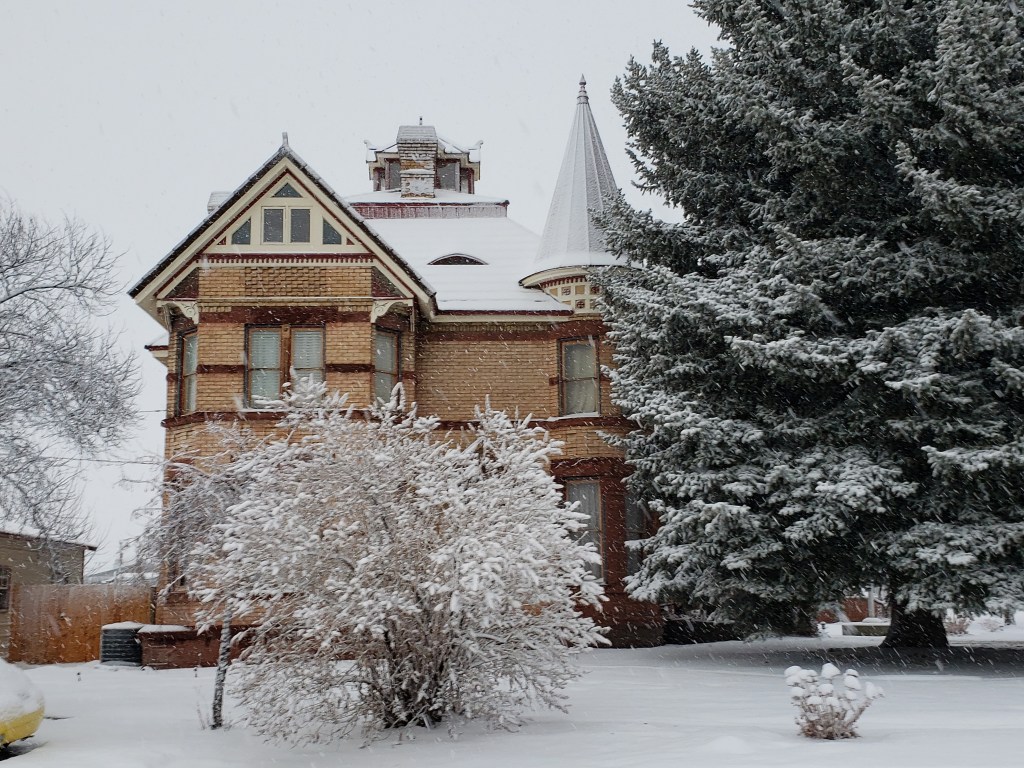

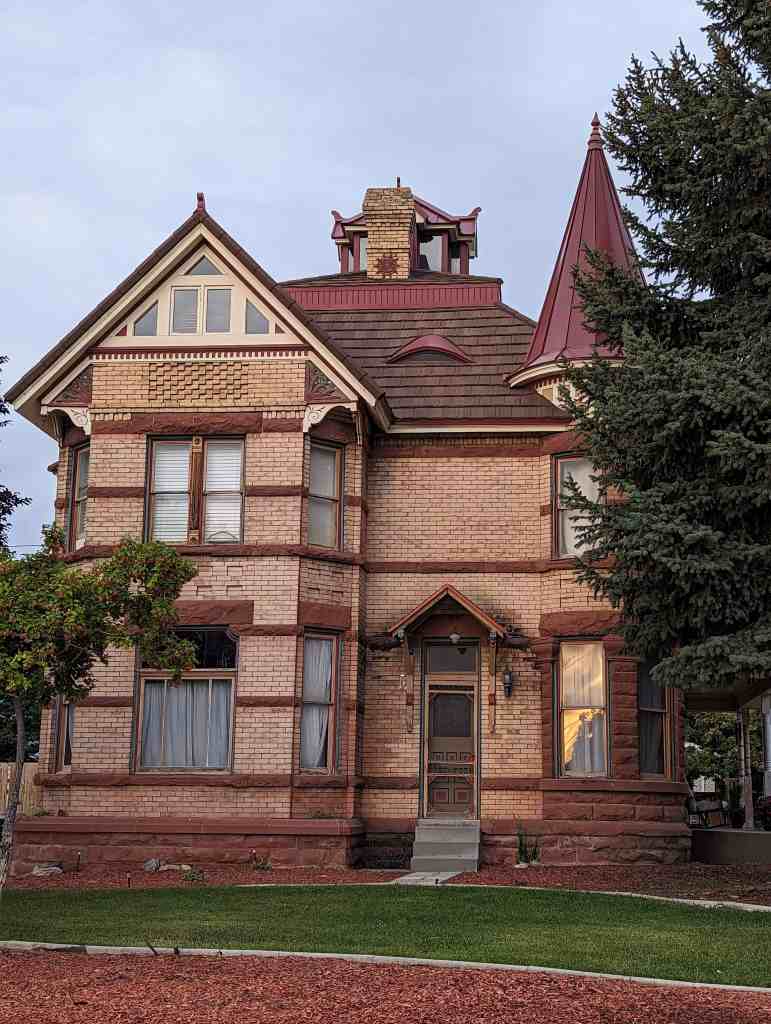


01 Tuesday Jul 2014
Posted in Uncategorized
Tags
Payson, Salem, spanish fork, utah, utah county, Woodland Hills
30 Monday Jun 2014
Posted in Uncategorized
Tags
historic, Mines, Payson, Salem, utah, utah county, Woodland Hills
Jay M. Haymond
Utah History Encyclopedia
The so-called Dream Mine is located east of Salem in Utah County. The mine founder, John H. Koyle, was born August 14, 1864 at Spanish Fork, Utah County. He married Emily Arvilla Holt 9 December 1884. They had four son and three daughters. At about age twenty-two, Koyle experienced a dream about lost livestock and other domestic matters. Gradually he became known as a visionary man. He grew to dream about a wide variety of subjects, including world affairs. Many of his predictions came true and earned him a following of faithful admirers.
His membership in the Mormon Church led him to serve a mission in 1888 to 1891 in the Southern States Mission. His dreams continued and he was known as a missionary with prophetic abilities. Following his missionary service, Koyle returned home to his wife and family to resume farming.
In August 1894 he experienced a dream in which he was visited by a figure from another world. The visitor carried him to a high mountain east of Koyle’s house and into the mountain, showing him the various strata and explaining the meaning of the minerals. The visitor showed Koyle an ancient “Nephite” mine with large rooms of mined-out ore bodies. The rooms contained treasure and artifacts of an extinct civilization. Koyle was instructed that he was to open a mine and extract gold for the welfare of “his” people. Specific instructions were given for the mine development leading to rich ore bodies. The riches would be found and released to him and his followers during a time of world crisis. The wealth would be spread to others through Koyle and the people organized around the mine. In this way the name “Relief Mine” was attached to the project. The heavenly messenger made it known that the wealth would not be available for “self gratification.” The dream was repeated for a total of three times. Koyle talked of his dream to friends and others for support. In 1909 the Koyle Mining Company was formed with 114,000 shares of stock issued at $1.00 per share.
Koyle’s dreams continued. He predicted the First World War and the economic crash of October, 1929. He foresaw “horseless carriages” bigger than railroad cars going down the road at great speeds. He especially received instruction on how to develop the mine. Plans included air shafts, escape ways and drainage tunnels. Instructions came to build a processing mill and storage bins for grain. By 1910, Koyle was appointed bishop of the Leland Ward in Spanish fork. The mining activities closely coupled with his church work attracted attention from the Mormon Church leaders. Apostle James E. Talmage, a geologist by training, came to look at the Dream Mine claims and could find no evidence that precious metals would ever be found in the strata being explored. The Mormon Church spoke out against the Koyle mine and associated activities and released John H. Koyle from the bishopric. However, Koyle’s ongoing success as a seer and visionary continued to attract supporters and money, including some members of the Mormon Church leadership. Koyle was getting a mixed message from the Church. For a time, Koyle moved some members of his family to Idaho to pursue farming and while there Koyle was appointed to another bishopric as a councilor, but released when the Mormon leadership learned of the appointment. He continued to attract opposition from the Church for the rest of his life. He negotiated a repudiation of his claims, in 1947 and then reversed himself almost immediately and was excommunicated from the Church 18 April 1948. John H. Koyle died 17 May 1949 in Payson.
The mine continued in fits and starts under the leadership of Quayle Dixon for another twenty-three years. In 1961, a new company, The Relief Mine Company, succeeded the Koyle Mining Company and continued to do the minimum $100 per claim annual assessment work. Little more can be said about the often promised Koyle Dream Mine.
See: Norman C. Pierce, The Dream Mine Story, Salt Lake City, 1972.
10 Tuesday Jun 2014
Posted in Uncategorized
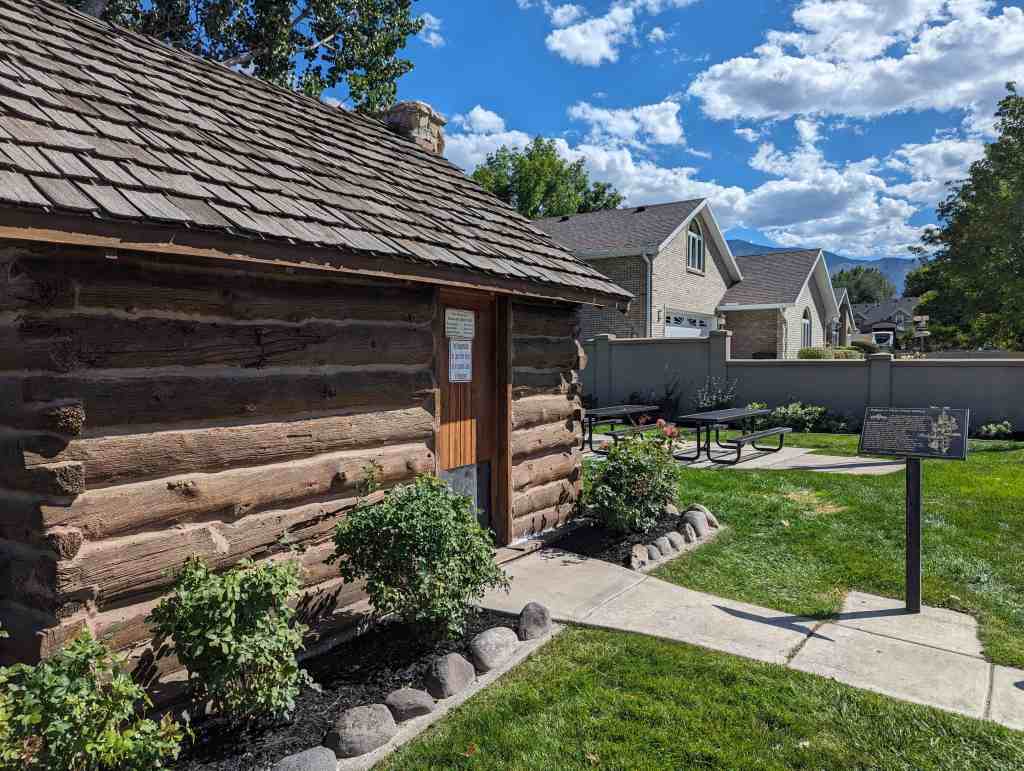
This log cabin was used as the first Post Office in Salem. It was built on the east bank of the Salem Pond by George Killiam, who served as postmaster from March 1, 1872 to 1877. Harry Nelson then purchased the cabin, moved it to the southeast part of Salem, and used if for a summer home. It was later sold to Chris Nelson, his brother, whose children played there until 1937, when it was purchased by the Daughters of Utah Pioneers. The cabin was next moved to a location northwest of the chapel of The Church of Jesus Christ of Latter-day Saints. On March 19, 1972, the cabin was moved to the southwest corner of the church lot when a new LDS Chapel was built. It has now been moved to the west bank of the Salem Pond at 13 South 300 West, renovated and furnished with pioneer artifacts.
The text above is from Daughters of Utah Pioneers historic marker #479, located at Salem Pond at 99 South 300 West in Salem, Utah
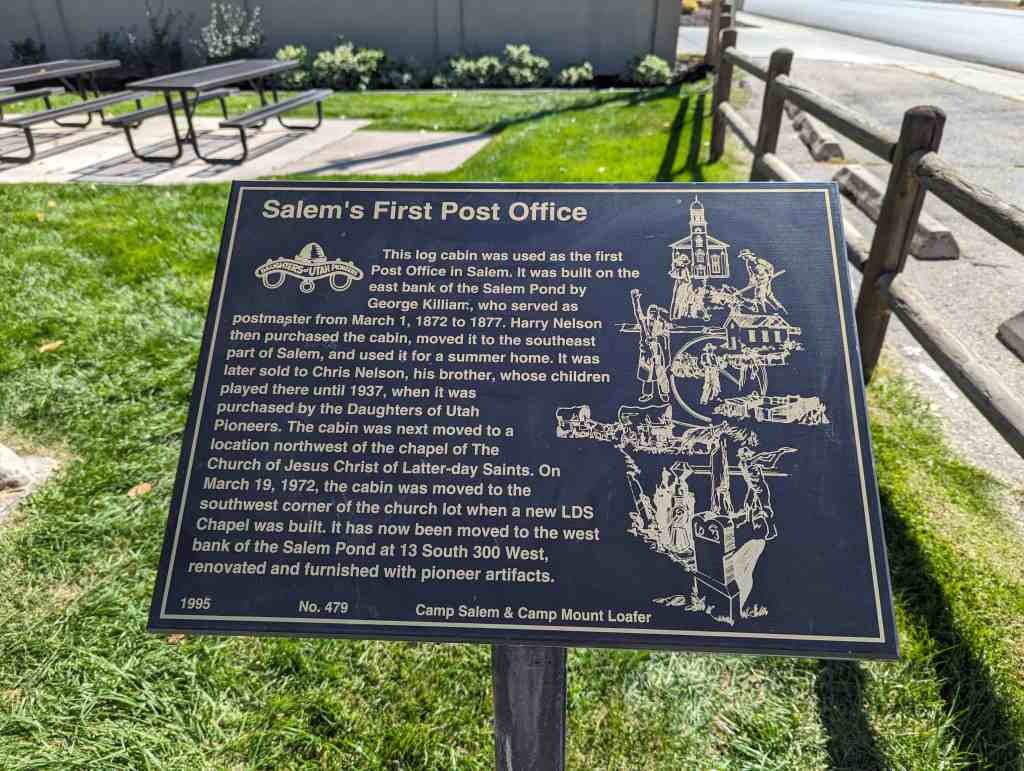
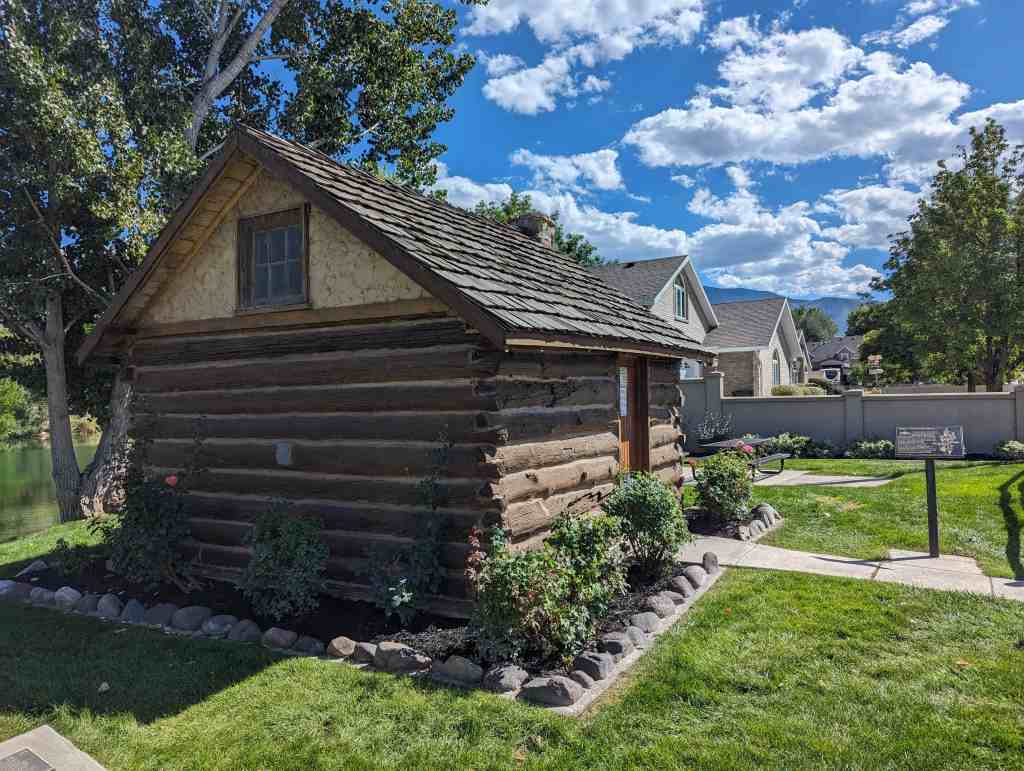

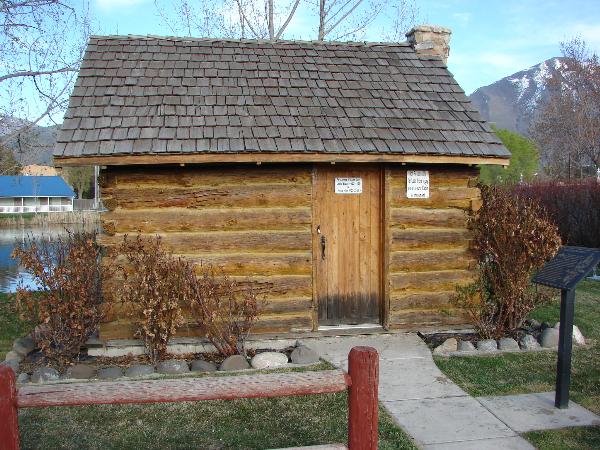



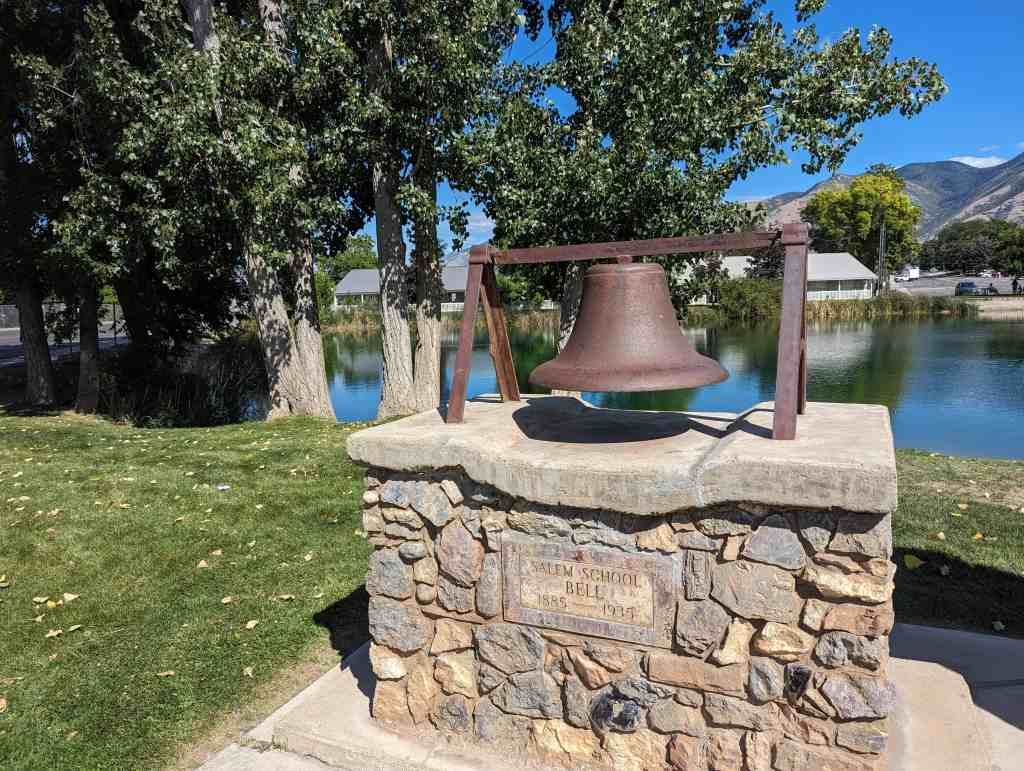


22 Thursday May 2014
Posted in Uncategorized
Tags
DUP, Forts, historic, Payson, Salem, spanish fork, utah, utah county

In 1851 David Fairbanks and David Crockett located land adjacent to a small stream at the head of Salem Lake and built a dam. In 1856 Eli Ashcraft, Royal Durfey, Silas Hillman, Acquilla Hopper, Jacob Killian, Truman Tryon and their families settled Pond Town and began the fort for protection against Indians. The fort was 160 feet north and south and 150 feet east and west. Robert David and Thomas Killian arrived later in the same year. The name of Pond Town was changed to Salem (the City of Peace) by Lyman Curtis.
The text above is from Daughters of Utah Pioneers historic marker #36, located at Salem Pond at 99 South 300 West in Salem, Utah




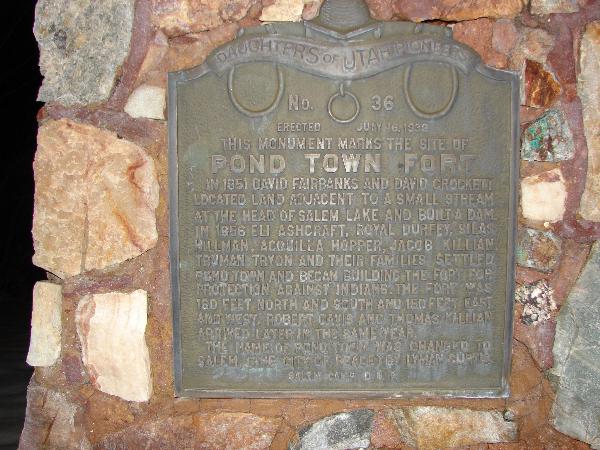
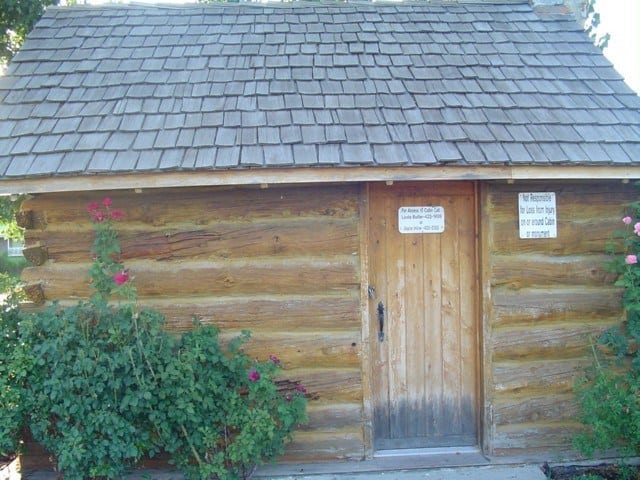






21 Monday Apr 2014
Posted in Uncategorized
Tags
Benjamin, Palmyra, Payson, Salem, spanish fork, utah, utah county
Benjamin Posts:
Benjamin is a small town of 1,145 as of the 2010 census.
Some residents made a request in February 2009 to make Benjamin an incorporated town, in an effort to prevent annexation by the neighboring cities of Salem, Spanish Fork, and Payson.(*)
Benjamin was settled in 1863 by Barry Wride. A natural outgrowth of Payson, a town just three miles to the north, the townsite of Benjamin was first surveyed in 1886. It was Benjamin Franklin Stewart, an LDS presiding elder from 1868-85, after whom the town was named. Other early settlers included John Hawkins and Benjamin’s brother, Andrew Jackson Stewart.(*)